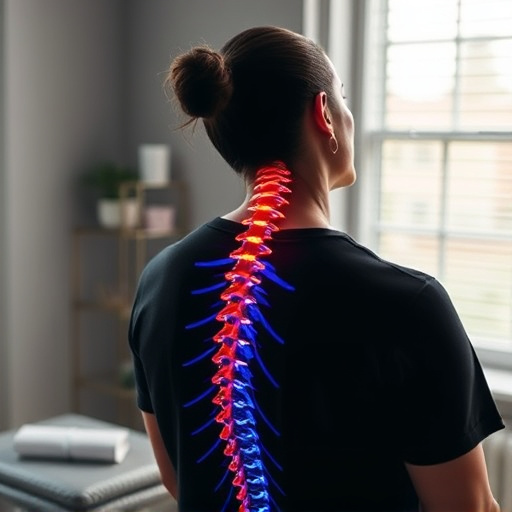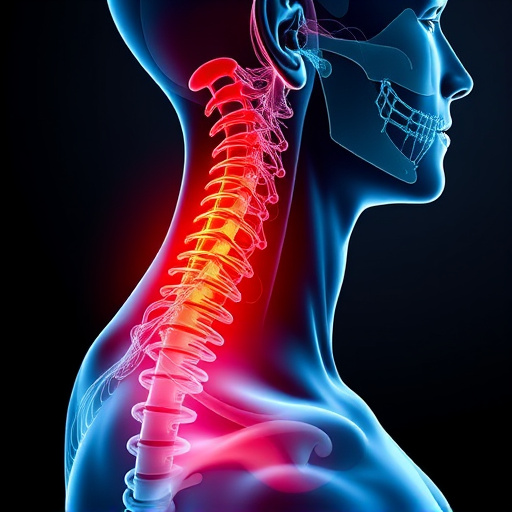Chronic pain, lasting over 12 weeks, impacts millions globally with diverse causes. Unlike acute pain, it offers no warning and hinders daily life. Effective management requires understanding its nature and impact, exploring non-invasive techniques like chiropractic care, massage, acupuncture, and shockwave therapy before considering injections. Navigating risks and benefits of injections is essential; they offer targeted relief but carry risks like infection. For severe cases, shockwave therapy can be a game-changing alternative to surgery, improving quality of life.
Chronic pain is a complex condition that significantly impacts an individual’s quality of life. This article aims to guide readers through various aspects of managing chronic pain, focusing on injections as a potential solution. We’ll explore common challenges, delving into non-invasive options first before discussing the risks and benefits of injection therapies. By understanding these approaches, individuals can make informed decisions about their chronic pain management strategies.
- Understanding Chronic Pain and Its Impact
- Exploring Non-Invasive Pain Relief Options
- Navigating Risks, Benefits of Injections for Chronic Pain Management
Understanding Chronic Pain and Its Impact

Chronic pain is a complex condition that goes beyond acute pain and can significantly impact an individual’s quality of life. It is defined as pain that persists for more than 12 weeks, often continuing long after the initial injury or illness has healed. Unlike acute pain, which serves as a warning signal to the body, chronic pain can be debilitating and persistent, with no clear purpose. This condition affects millions worldwide, with various causes ranging from injuries like herniated discs and sports injuries to conditions such as arthritis, fibromyalgia, and nerve damage.
The impact of chronic pain is profound, affecting not just physical health but also mental well-being. It can lead to difficulty sleeping, fatigue, mood disturbances, and even cognitive issues. People with chronic pain often struggle with daily tasks and may experience reduced mobility and flexibility, especially in cases of lower back pain. Understanding the nature of chronic pain and its effects is crucial in recognizing when alternative treatment methods, such as injection therapy, could provide much-needed relief and enhance chronic pain management.
Exploring Non-Invasive Pain Relief Options

Before considering injections for chronic pain management, it’s essential to explore a range of non-invasive options designed to alleviate discomfort and enhance quality of life. Chiropractic care, for instance, offers adjustments to the spine and joints, aiming to restore function and reduce pain signals. Similarly, wellness care focuses on holistic approaches like massage, acupuncture, and physical therapy, which can effectively manage chronic pain without injections. Even shockwave therapy has emerged as a promising alternative, using sound waves to stimulate tissue repair and reduce inflammation.
These non-invasive methods provide safer, drug-free avenues for chronic pain management. They not only target the source of discomfort but also promote overall wellness. By considering these options first, individuals can make informed decisions about their treatment plans and determine whether injections are truly necessary for achieving lasting relief.
Navigating Risks, Benefits of Injections for Chronic Pain Management

Navigating Risks and Benefits of Injections for Chronic Pain Management
When considering injections as a chronic pain management option, it’s crucial to weigh both the potential risks and significant benefits. While injections carry inherent risks, such as infection or temporary discomfort at the injection site, they also offer substantial advantages tailored to chronic pain patients. These include targeted delivery of medication directly to affected areas, providing prolonged joint pain relief and reducing inflammation in conditions like musculoskeletal injuries.
For individuals struggling with persistent and severe chronic pain, injections can be a game-changer. Techniques like shockwave therapy have emerged as innovative approaches, offering promise for joint pain relief without invasive surgery. By carefully evaluating the potential risks and reaping the benefits of advanced treatment options, patients can take proactive steps towards managing their chronic pain effectively and improving their overall quality of life.
For individuals struggling with chronic pain, injections can offer a targeted and effective solution. By carefully navigating non-invasive options first and understanding the risks and benefits, patients can make informed decisions about their chronic pain management. Injections provide a temporary yet potentially transformative relief, allowing for improved quality of life and enhanced mobility. This approach deserves consideration as part of a comprehensive strategy to manage chronic pain effectively.














